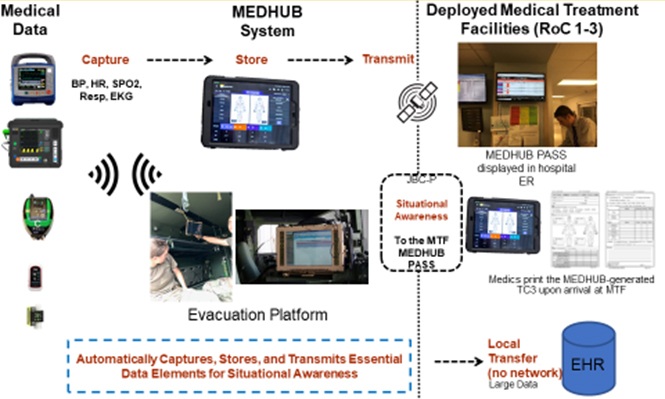A 'Convergence' of Humans, Data and Machines for Warfighter Performance and Combat Casualty Care
September 30, 2020 | Download PDF
 Mr. Matt Quinn, Science Director TATRC
Mr. Matt Quinn, Science Director TATRCEveryone is hearing a lot about “Project Convergence” these days, but what does it actually mean? According to the Army Futures Command website, “Project Convergence is a campaign of learning to aggressively pursue an artificial intelligence and machine learning-enabled battlefield management system. Because whoever can see, understand, and act first will win.” (https://armyfuturescommand.com/convergence/).
Project Convergence envisions that the Army, “as part of the Joint and Combined fight, can rapidly and continuously converge effects across all domains – air, land, sea, space, and cyberspace – to overmatch the adversaries in competition and conflict.” (https://www.army.mil/standto/archive/2020/09/14/)
In more concrete terms, Project Convergence will require secure and seamless integration of advanced threat sensing with data, cloud and AI technologies.
So maybe you’re wondering “how does TATRC fit into Project Convergence?”
TATRC’s new mission, which is focused on “fusing humans, data and machines into solutions that optimize warfighter performance and combat casualty care,” directly aligns with the needs of Project Convergence. In recognition of this, MRDC leadership has challenged TATRC to lead the Command’s Project Convergence efforts.
This is not new for TATRC. TATRC has been leading and funding projects that use intelligent systems as a medical force multiplier for years. Project Convergence will demand further integration of manned and unmanned teaming, autonomy, and networked systems to decrease the human burden of casualty care, expand capacity, and increase the lethality of the force.
For example, the MEDHUB system, managed by Mr. Jay Wang at the U.S. Army Medical Materiel Development Activity, supports secure, automatic capture, storage and transmission of data from devices and caregivers in military operational environments to support situational awareness.
 The MEDHUB Operational Overview. Graphic courtesy of our partners at USAMMDA.
The MEDHUB Operational Overview. Graphic courtesy of our partners at USAMMDA.
TATRC’s COVID-focused National Emergency Tele-Critical Care Network (NETCCN) project is a microcosm of Project Convergence as it assembles all of the components of a digital health ecosystem from the sensor to the cloud. In addition, TATRC has incorporated its Warfighter Health Data Commons, the NETCCN, and the broader Technology in Disaster Environments (TiDE) projects as a way to learn from care delivered through NETCCN, to inform improvements and translate findings from tele-critical care for COVID, to care in other disaster environments and large scale combat operations.
Transforming the “Golden Day” to a “Golden Window” by treating soldiers at the tactical edge with the right resources to the right place at the right time, will require development of Joint and Coalition “care-webs.” It will also require integrating sensors and capabilities at echelon to enable us to see, understand, decide and provide medical care faster to sustain operations.
In the near term, TATRC’s primary focus is communicating the importance of incorporating the medical domain as part of the initiative and sharing past and ongoing projects that can contribute. Being at the proverbial table, both during the planning and future of Project Convergence will integrate medical into “Big Army” processes and integrate Joint and Coalition Medical assets into a larger medical intelligent system.
In the longer term, TATRC will become an essential component of the Project Convergence “team” and plan. I look forward to sharing the work of our labs on advancing this important initiative.
This article was published in the January 2021 issue of the TATRC Times.